
Unlocking Safety: Choosing the Right Secure Door Locks
Share
Why Your Door Lock is Your Home's First Line of Defense
Secure door locks are the most critical barrier between your family and potential intruders. Having a strong lock can lower the risk of break-ins by over 30%, making your choice of door security one of the most important decisions for protecting your home and loved ones.
Top Features to Look for in Secure Door Locks:
- ANSI Grade 1 rating - The highest security standard for residential locks
- Deadbolts with hardened steel bolts - Resist sawing and drilling attempts
- Smart lock capabilities - Remote access, activity logs, and temporary codes
- Solid brass or steel construction - Long-lasting durability and tamper resistance
- Multiple locking points - Improved security through reinforced strike plates
The foundation of home security starts at your front door. While a solid, high-quality door provides the structure, even the best door can only do so much without a dependable lock system. Modern homeowners have more options than ever - from traditional deadbolts that offer exceptional physical resistance to smart locks that provide remote monitoring and keyless convenience.
Security experts recommend a layered approach. Two locks are harder to bypass than one, which is why many homeowners combine a high-grade deadbolt with a smart handleset or add a second lock.
We specialize in premium European-style doors and advanced locking systems. With years of experience, I've seen how the right secure door locks transform both security and peace of mind.
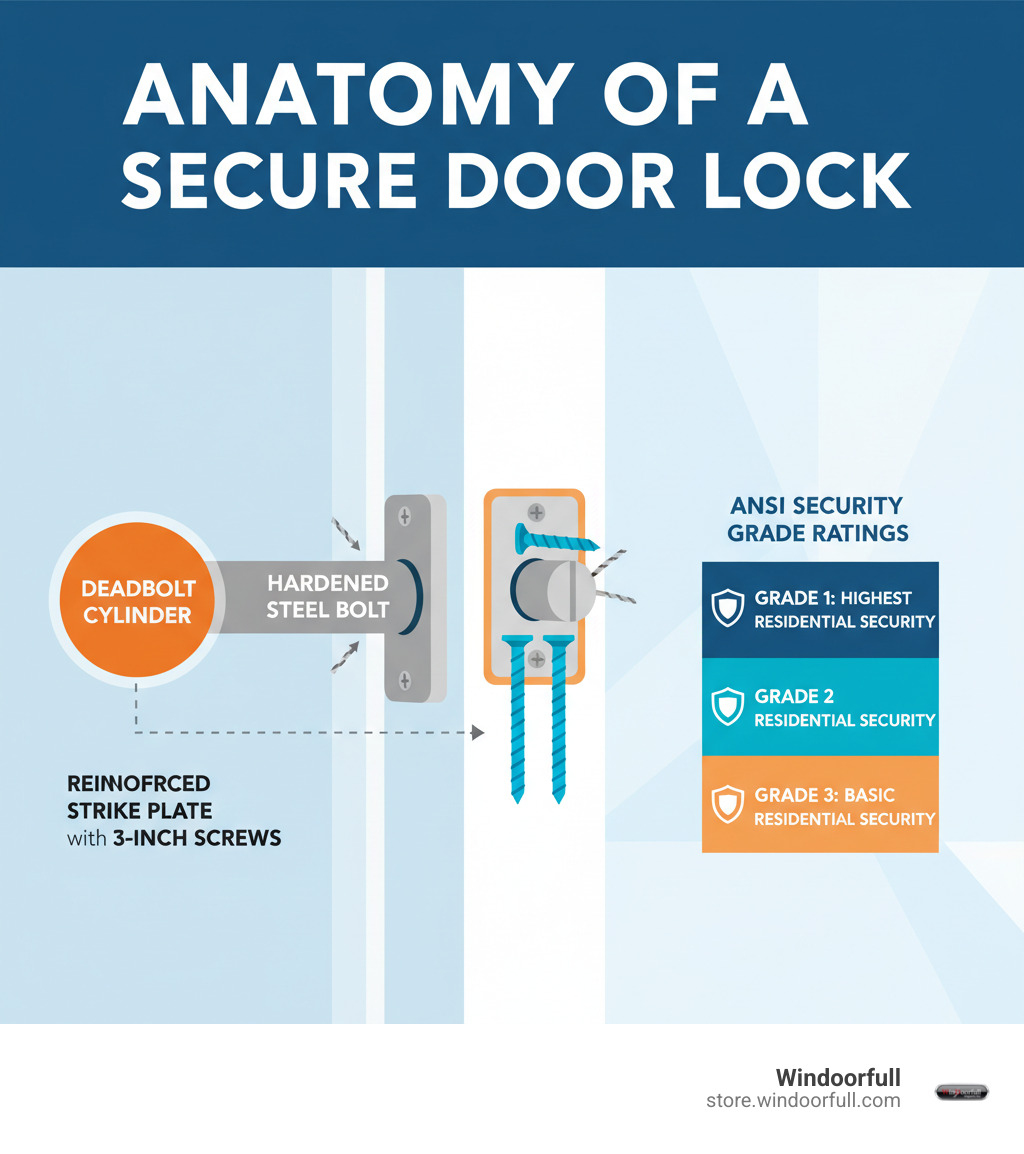
Understanding the Foundation: Types of Door Locks
Choosing the right door lock is the first step in building a robust defense. Residential locks often prioritize ease of use and aesthetics, while commercial settings demand higher traffic resilience and advanced access control. The primary distinction is between traditional mechanical locks and modern electronic options. Understanding these types helps you choose the best fit for your needs.
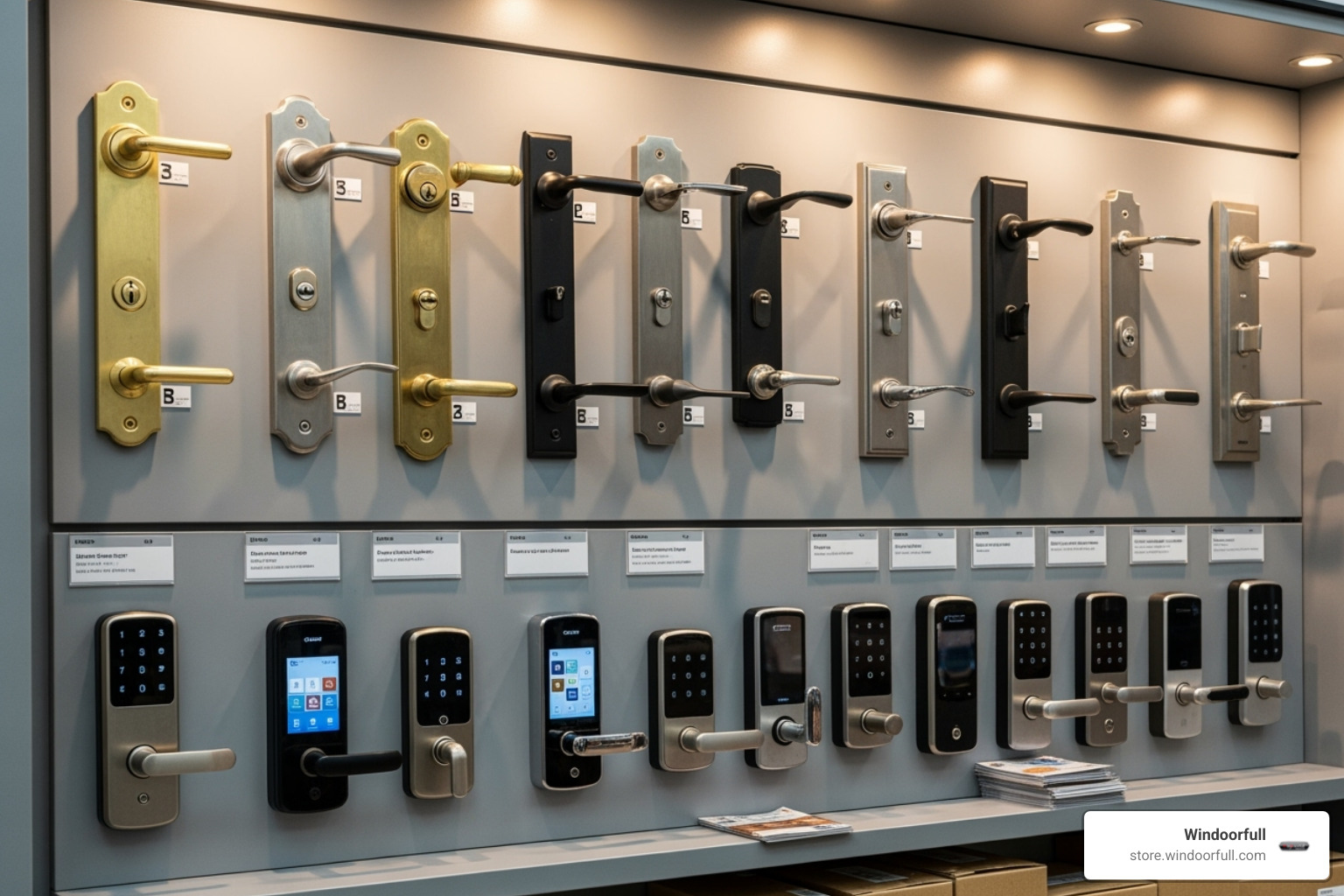
Mechanical Locks: The Traditional Guardians
These are the locks most of us grew up with, relying on physical keys and intricate internal mechanisms. Many mechanical locks offer formidable security.
-
Deadbolts: The deadbolt is the backbone of door security. Unlike spring-latch locks in doorknobs, a deadbolt's solid bolt extends deep into the door frame, making it highly resistant to forced entry.
- Improved Security: More resistant to lock-picking than standard latches.
- Saw-Proof: A rotating spindle makes the bolt difficult to saw through.
-
Types:
- Single-Cylinder Deadbolts: Key on the outside, thumb-turn on the inside. Offers quick exit but is a risk if near a window an intruder could break.
- Double-Cylinder Deadbolts: Requires a key on both sides. More secure against entry through a broken window, but can be a fire hazard. Check local fire codes before installing on main exits.
- Mortise Locks: Often found in substantial, European-style doors, a mortise lock is a heavy-duty system fitting into a pocket (mortise) in the door's edge. It combines a deadbolt and latch bolt, offering robust security and durability.
-
Handle Locks (Knobs and Levers): These combine the latching mechanism with the handle. Their security often comes from an accompanying deadbolt.
- Doorknobs: The classic choice, effective for interior doors where privacy is the main concern.
- Lever Locks: Lever locks offer more convenience than doorknobs, especially for those with limited hand mobility or when carrying items. A simple push down opens the door. While not inherently more secure, their ease of use makes them a popular choice, especially when paired with a strong deadbolt.
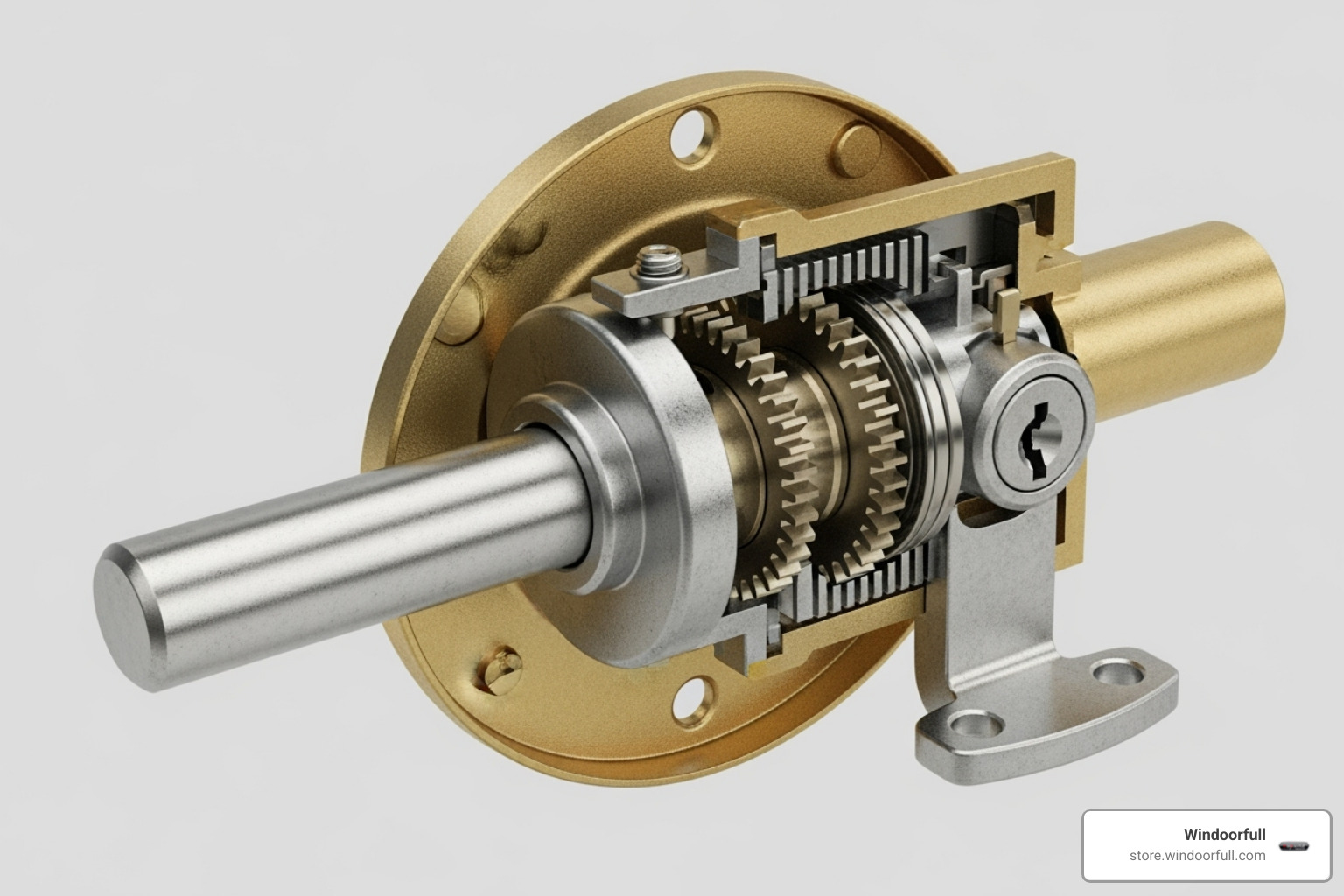
The Rise of Keyless Entry: Smart and Electronic Locks
Electronic and smart locks blend convenience with advanced security features.
- Electronic Keypads: These locks use a numeric code for entry, eliminating physical keys. They are ideal for granting temporary access, as codes can be easily changed, offering flexibility traditional locks lack.
-
Smart Locks: Taking electronic locks a step further, smart locks integrate with your home's Wi-Fi or Bluetooth network.
- Remote Locking/Open uping: Check your door's status and lock or open up it from anywhere using a smartphone app, providing peace of mind.
- User Codes & Activity Logs: Assign unique codes and track who enters and when. This provides a detailed audit trail, useful for managing guests or rental properties.
- Temporary Access: Generate time-sensitive or single-use codes for visitors.
- Voice Assistant Integration: Many smart locks integrate with assistants like Alexa and Google Assistant for hands-free control.
- Matter and HomeKit Compatibility: New standards like Matter and HomeKit allow greater interoperability across smart home ecosystems.
- Biometric Locks: Biometric locks use unique traits like fingerprints for access. A simple touch open ups the door, eliminating keys or codes for fast, secure entry.
The key benefits of smart and electronic locks are convenience, improved access control, and real-time monitoring, keeping you connected to your home from anywhere.
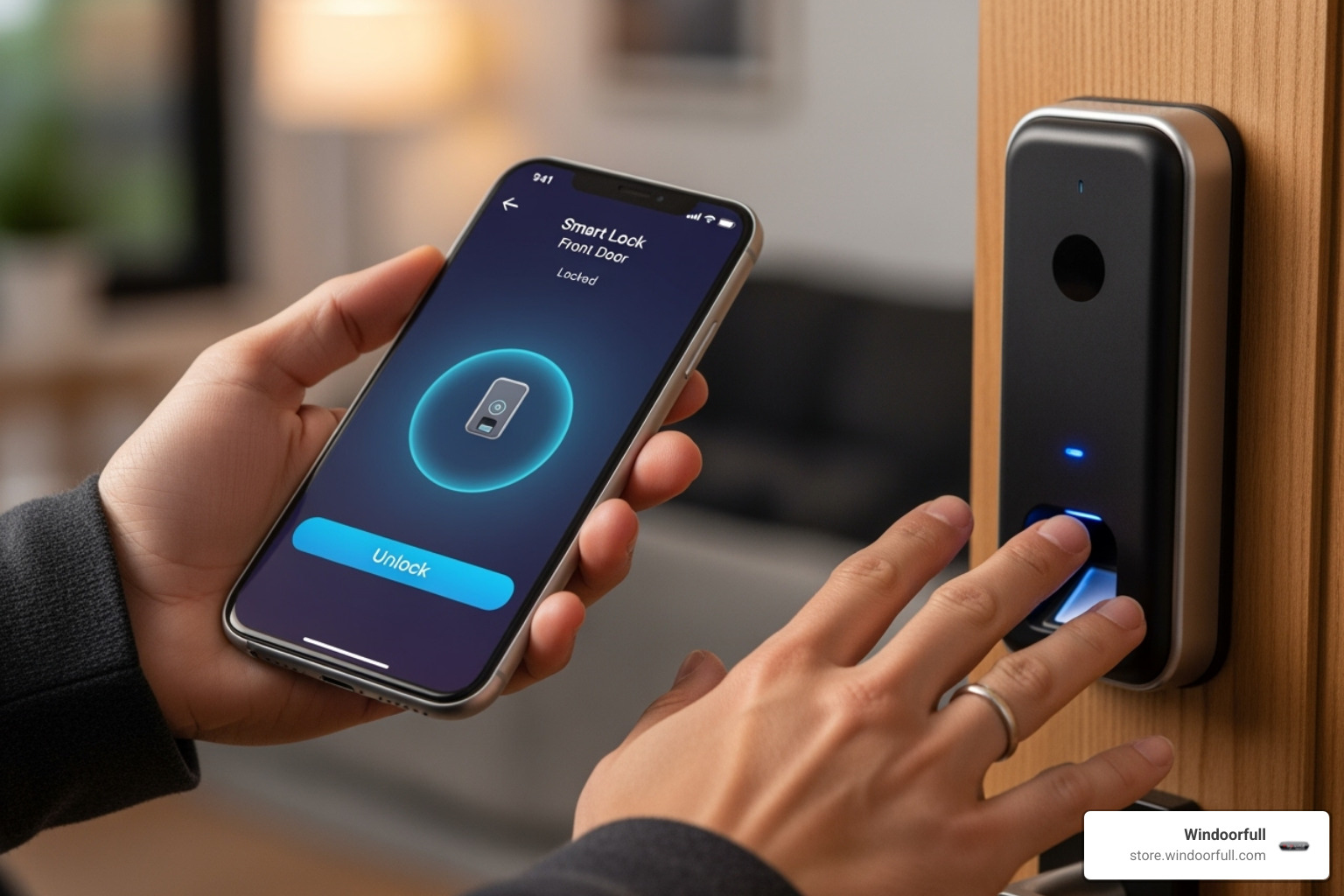
How to Choose the Best Secure Door Locks for Your Home
Choosing the right secure door locks is critical for your family's safety. The best lock isn't the most expensive, but the one that fits your specific needs, budget, and lifestyle. When guiding customers, we focus on security ratings, material durability, and useful features. However, even the best lock is ineffective if poorly installed or mismatched with your door. Finding the balance between protection, durability, and affordability is key.
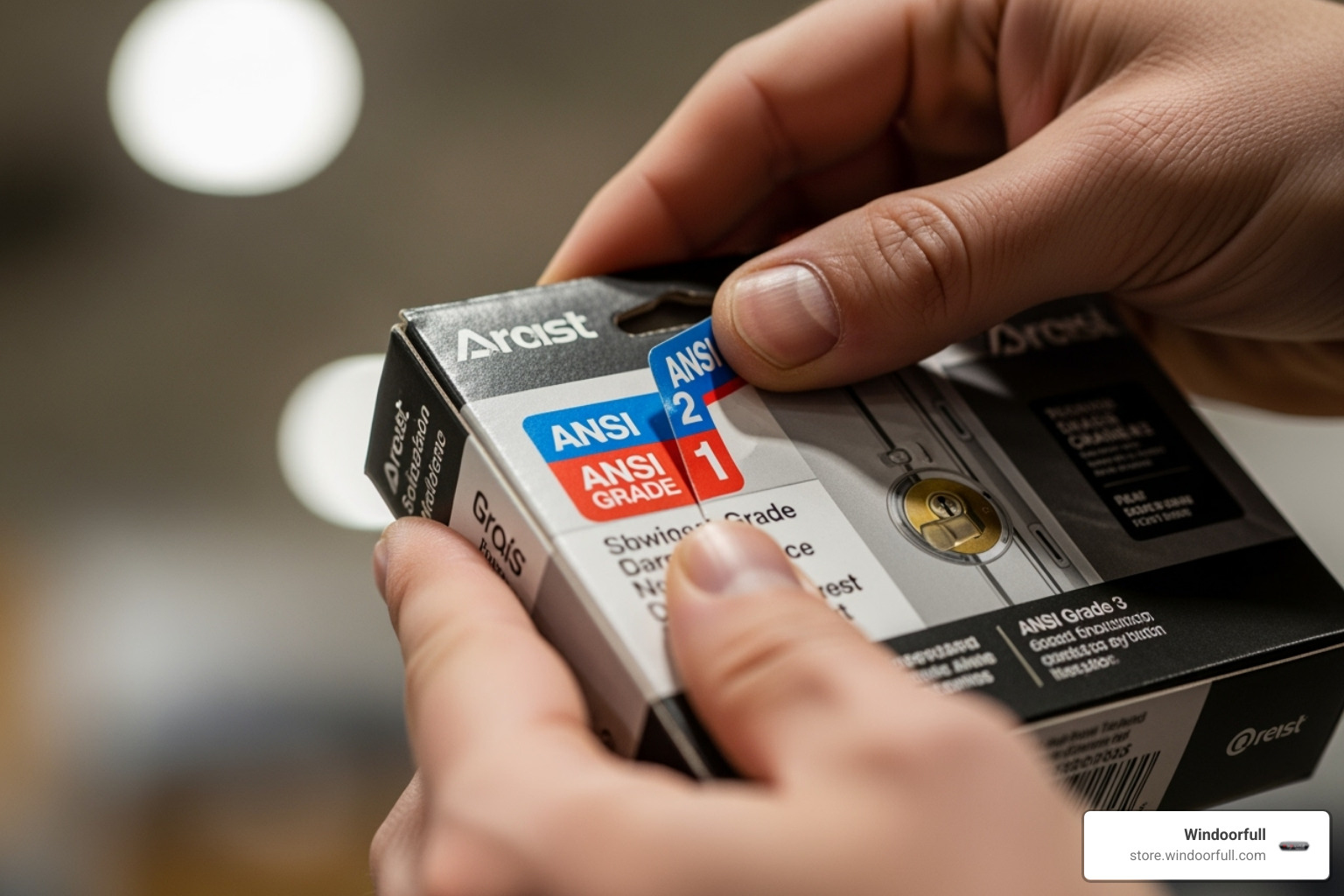
Decoding Security: Materials, Construction, and Ratings
The strength of your lock begins with its materials and construction. A lock is only as strong as its weakest part.
Solid brass is a classic choice for lock bodies due to its corrosion resistance and strength. For the bolt itself, hardened steel is essential, as it's incredibly tough to cut, saw, or drill.
ANSI grades are performance standards determined by rigorous testing.
Grade 1 locks are the gold standard. Built for commercial use, they are ideal for homes where security is the top priority. They withstand significant force and resist picking. We recommend Grade 1 for main entry doors.
Grade 2 locks offer excellent residential protection, balancing strong security with affordability. They are a popular choice for most homeowners.
Grade 3 locks provide basic security. For exterior doors, we strongly recommend upgrading to a higher grade for your family's safety.
Quality locks also feature tamper resistance, pick resistance, and drill resistance. These design elements make a burglar's job much harder. Some award-winning security features incorporate innovative designs proven in real-world scenarios.
Layering Your Defense: The Power of Two Locks
Using two locks significantly improves your home security, making a strong statement to potential intruders.
Two locks mean double the time, effort, and noise for a break-in. Since time is a burglar's enemy, this delay makes them more likely to give up and find an easier target.
Having two locks also creates a natural backup system. If one lock fails or gets damaged, you're not left vulnerable.
The deterrent effect is also powerful. A door with two visible, high-quality locks signals that the homeowner takes security seriously, deterring burglars looking for easy opportunities.
My favorite combination is a Grade 1 deadbolt paired with a smart handleset. The deadbolt provides rock-solid physical security, while the smart lock offers convenience for daily use, giving you the best of both worlds.
For more comprehensive home security strategies, I recommend checking out our guide on Peace of Mind: Simple Steps to a Safer Home. It's all about creating layers of protection that work together to keep your family safe.
Innovations and Best Practices for Your Locks
The world of secure door locks is constantly evolving. To maximize their effectiveness, it's important to understand the latest innovations and follow best practices for installation and maintenance. A great lock is only as good as its installation and care.
The Critical Role of Proper Installation for secure door locks
Proper installation is critical; even the best lock is only as secure as its installation.
- Professional vs. DIY: For critical entry points, we recommend professional installation to ensure perfect alignment and reinforcement.
- Door Frame Integrity: The lock's bolt needs a strong anchor. Ensure your door frame is solid and free from rot or cracks.
- Strike Plate Reinforcement: This is a crucial upgrade. Replace the standard short screws on your strike plate with 3-inch screws that anchor into the wall studs behind the frame. This dramatically increases resistance to kick-ins.
- Proper Alignment: The bolt must align perfectly with the strike plate for the lock to function smoothly and securely.
- Functionality Testing: After installation, test the lock multiple times with the door open and closed to ensure the bolt extends and retracts fully.
- Avoiding Common Mistakes: Rushing the installation, using incorrect tools, or failing to reinforce the strike plate are common pitfalls that compromise security.
Just as we emphasize the importance of secure windows for a holistic home defense, proper lock installation is paramount. Dive deeper into fortifying your entire home with our article, Beyond the Pane: Choosing High-Security Windows for Ultimate Protection.
Best Practices for Maintaining your secure door locks
Your secure door locks require regular maintenance to ensure lasting security. Neglect can lead to malfunctions, leaving your home vulnerable.
Here are our best practices for keeping your locks in top shape:
- Regular Cleaning: Use a soft cloth to wipe down the exterior. Use compressed air to clear debris from the keyway.
- Lubricating Moving Parts: Annually, apply a graphite or silicone-based lubricant (not oil) to the keyway and bolt to keep mechanical locks operating smoothly.
- Checking for Loose Screws: Periodically inspect and tighten any loose screws on the lock body, strike plate, and hinges.
- Battery Replacement for Electronic Locks: Don't ignore low-battery warnings. Proactively replace batteries every 6-12 months as recommended by the manufacturer.
- Firmware Updates for Smart Locks: Keep your smart lock's firmware up-to-date to protect against digital vulnerabilities and get the latest features.
- Inspect for Wear and Tear: Look for any signs of damage, corrosion, or excessive wear that might signal a need for repair or replacement.
By following these simple maintenance steps, you can significantly extend the life of your door locks. For more on how smart technology can integrate into your home security, check out various smart home integration stories.
Frequently Asked Questions about Secure Door Locks
Here are answers to the most common questions we receive about secure door locks.
What is the most secure type of door lock?
The most secure setup combines different elements rather than relying on a single lock.
A Grade 1 deadbolt provides excellent physical resistance against common break-in methods like sawing, drilling, and kicking.
A smart lock adds convenience and monitoring with features like activity logs, remote access, and temporary visitor codes.
The most secure setup combines a high-quality mechanical deadbolt with a smart lock or a robust handleset. The deadbolt provides physical protection, while the smart lock adds access control and monitoring, creating a system that's harder to defeat.
Are smart locks safer than traditional locks?
They offer different types of security. Understanding these differences helps you choose what's best for your home.
Smart locks improve control with audit trails, remote access, and temporary codes. This is a level of control traditional locks can't offer.
However, they can be vulnerable to hacking if not properly secured. Always use strong passwords and keep firmware updated. The risk of a physical break-in is generally higher than a digital one for quality smart locks.
Traditional high-security locks are physically robust but lack digital features. A Grade 1 deadbolt excels at resisting forced entry but won't provide an activity log.
The best choice balances physical and digital security. For maximum protection, pair a strong traditional deadbolt with a smart lock to get the best of both worlds.
How can I make my existing door lock more secure?
You can significantly improve your security with a few key upgrades.
Upgrade to a Grade 1 deadbolt if you don't already have one. This single change dramatically increases resistance to forced entry.
Replace short strike plate screws with 3-inch screws to anchor it to the door frame. This is a critical, low-cost upgrade. Standard short screws only grab the door jamb, but 3-inch screws anchor into the wall studs, making the door much harder to kick in.
Add a reinforcing plate around the lock to distribute the force of an attack and prevent the wood from splitting.
Ensure the door and frame are solid and in good condition. A great lock can't protect a weak door or rotting frame.
Consider adding a second lock for a layered defense. A second deadbolt or a smart lock paired with your existing one creates multiple challenges for an intruder.
Conclusion
Choosing the right secure door locks is a key investment in your family's safety and peace of mind. From traditional deadbolts to modern smart locks, you have many options to protect your home.
The best strategy is layering your defenses. Combining a strong ANSI Grade 1 deadbolt with a convenient smart lock creates a system that is both physically tough and intelligently aware.
Quality materials and ANSI ratings are your guide to proven security. A hardened steel bolt and solid construction are essential for resisting break-in attempts.
Proper installation is just as crucial as the lock itself. Simple details, like using 3-inch screws for the strike plate, can make the difference between a secure door and a vulnerable one.
At Windoorfull, we see secure door locks as just one piece of your home's complete protection puzzle. That's why we're passionate about bringing you European-style uPVC windows and doors that integrate seamlessly with advanced locking systems. Our tilt and turn windows and doors aren't just about superior energy efficiency – they're designed with security in mind, featuring multi-point locking systems that complement the door locks we've discussed today.
The right lock provides more than security; it provides peace of mind, whether you're at home or away.
Your journey to a more secure home doesn't end here. Explore our blog for more home security insights and find how the right combination of doors, windows, and locks can transform your home into the secure sanctuary you deserve.
